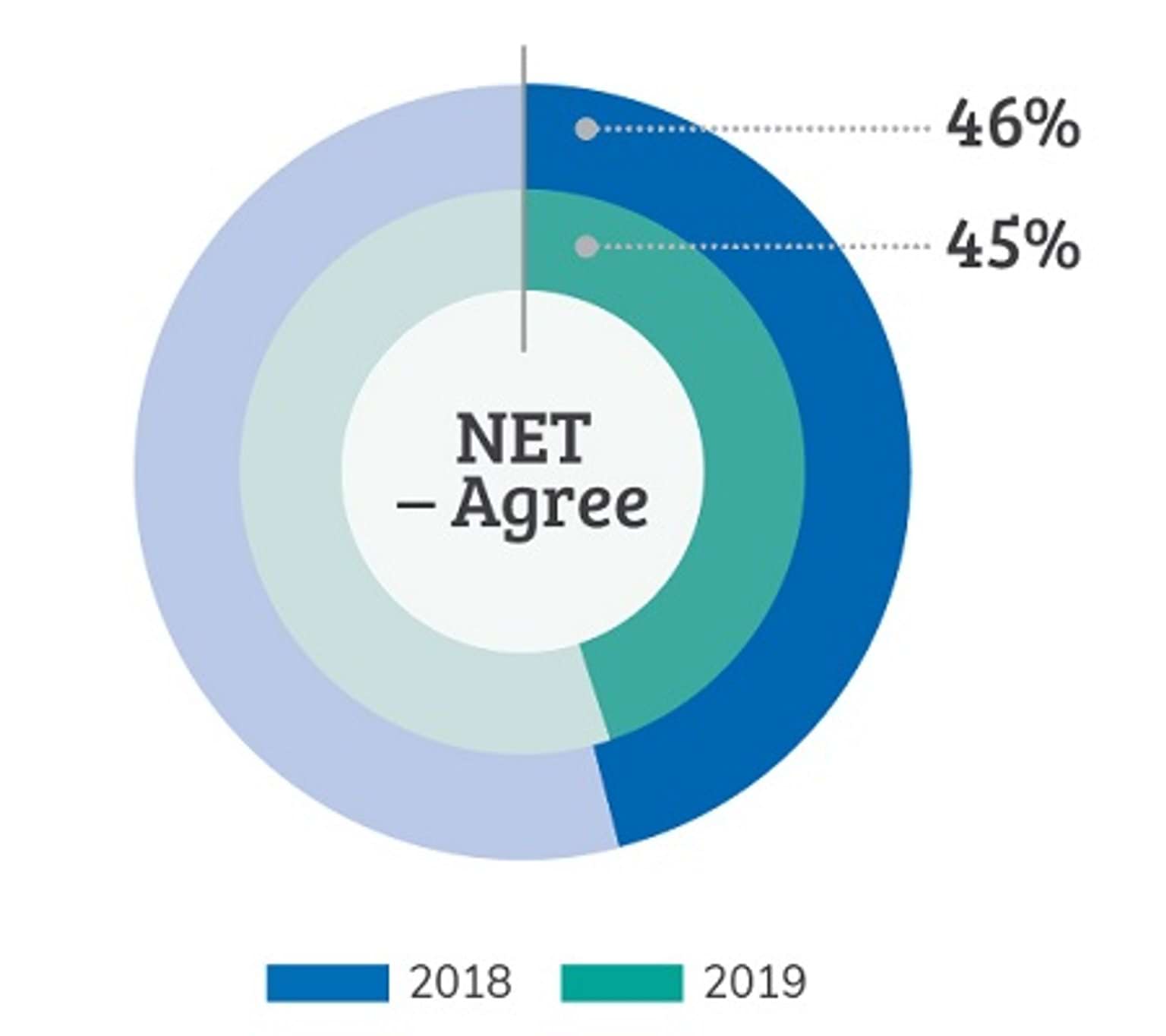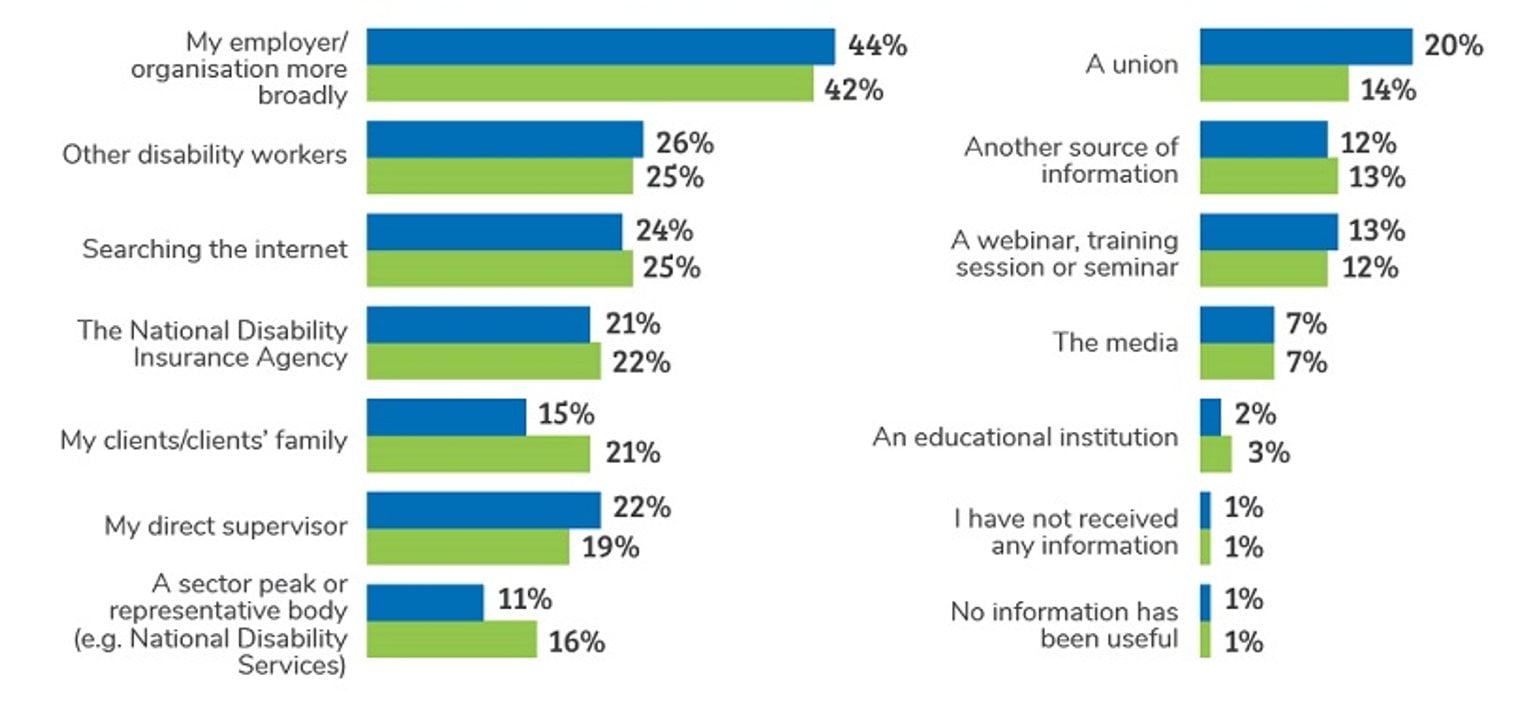This year, focus groups and in-depth interviews explored the communications needs of the workforce and found that generally, workers would like to receive more information about the NDIS to enable more certainty about their roles and empower them to better support their clients. There were particularly strong needs in relation to the content and status of clients’ plans, a need for tailored information, and a need to ensure that information provided to employers is adequately disseminated to all staff.
Communication about clients was top of mind
When asked about communications, workers who participated in the qualitative research tended to focus on a desire to know more about the planning process for their clients. Many workers reported not knowing the status of participant’s plans, details of their goals, or not receiving the details of a client’s history to inform their support approach. For many, addressing these gaps in information was the key priority.
"I need to know more [about my clients]: what are their goals? What I am supporting them for? I’m not just walking in to do domestic jobs. [I want to] be part of the team."
Workers want more direct communication about the NDIS, generally delivered face-to-face by credible colleagues in their practice area
When asked about communication about the NDIS more broadly, many workers cited a preference for face-to-face delivery of information, such as workshops, meetings and forums over written information. The benefits of this approach were that it would enable workers to share information and experiences, ask questions and – via the opportunity to network – feel less isolated and excluded. Workers emphasised that these events would need to occur in both metropolitan and regional areas, during work hours with pay, and back-fill would need to be provided to cover their shifts. It was noted that any information, regardless of delivery mode, should include tailored information for different practice areas. There was strong demand for these sessions to be peer-led, by someone with experience working at the coalface of the disability sector, rather than by a government organisation.
"You need [information about the NDIS to be delivered by] someone who will understand you. Someone who is a similar age, has worked on the front line and knows the day-to-day issues faced by care workers."
Frustration about information dissemination and change
Workers commonly reported that while information exchange around the NDIS does occur, face-to-face forums in particular tended to be available only to managers, and this information was not well distributed throughout provider organisations. There was also frustration that changes to NDIS processes were often not well communicated to the workforce. Many workers would appreciate direct communication, such as newsletters, so that they could stay informed of key changes.
As workers had often missed initial information about the NDIS, many still felt uncertain about the system and unable to assist their clients in understanding the planning process. This was particularly frustrating for workers who were often relied upon by clients and their families for information about disability systems as well as those with planning or application responsibilities. This suggests there is a need to continue to provide introductory information about the NDIS to the workforce.
"I want information about procedures and how to work within the system, if I put in applications for clients I want to know if I’m doing it the right way, what do I need, etc. it needs to be consistent and available."
Those workers who felt more informed about the NDIS reported that they often needed to take their own initiative, mostly by turning to web-based information points, such as those available through the websites of peak organisations.
Access to information was still found to vary considerably, impacting workers on the ground. There are many gaps in information, which means workers must be proactive or rely on informal channels (such as clients, other workers, or social media).
Many in the workforce also wanted the opportunity to provide feedback to the NDIA or government more broadly about how the NDIS was impacting them and their clients.
"We are the ones on the ground – working within the system, we need to be able to provide information to the people at the other end of the system about what is working and what’s not. I don’t think there are enough avenues for that to happen."
When asked what would need to change to make them feel more supported under the NDIS as an open-ended question, responses most commonly related to more information about the NDIS (38%), consistent with 2018. This finding was consistent by rollout stage, and generally consistent by setting, sector and NDIS impact.
What workers want to hear about
There is an appetite for:
- Clarity and transparency around NDIS processes with use of simpler language.
- Information on planning and appeals they can share with clients.
- Information on their rights, including what to do if being poorly treated, or anxious about safety for client.
- Information on career pathways, options and upskilling.
- A more practical vision of what the NDIS should look like when it is done well.
- Information tailored to different settings, clients and disability professionals.
Updated


